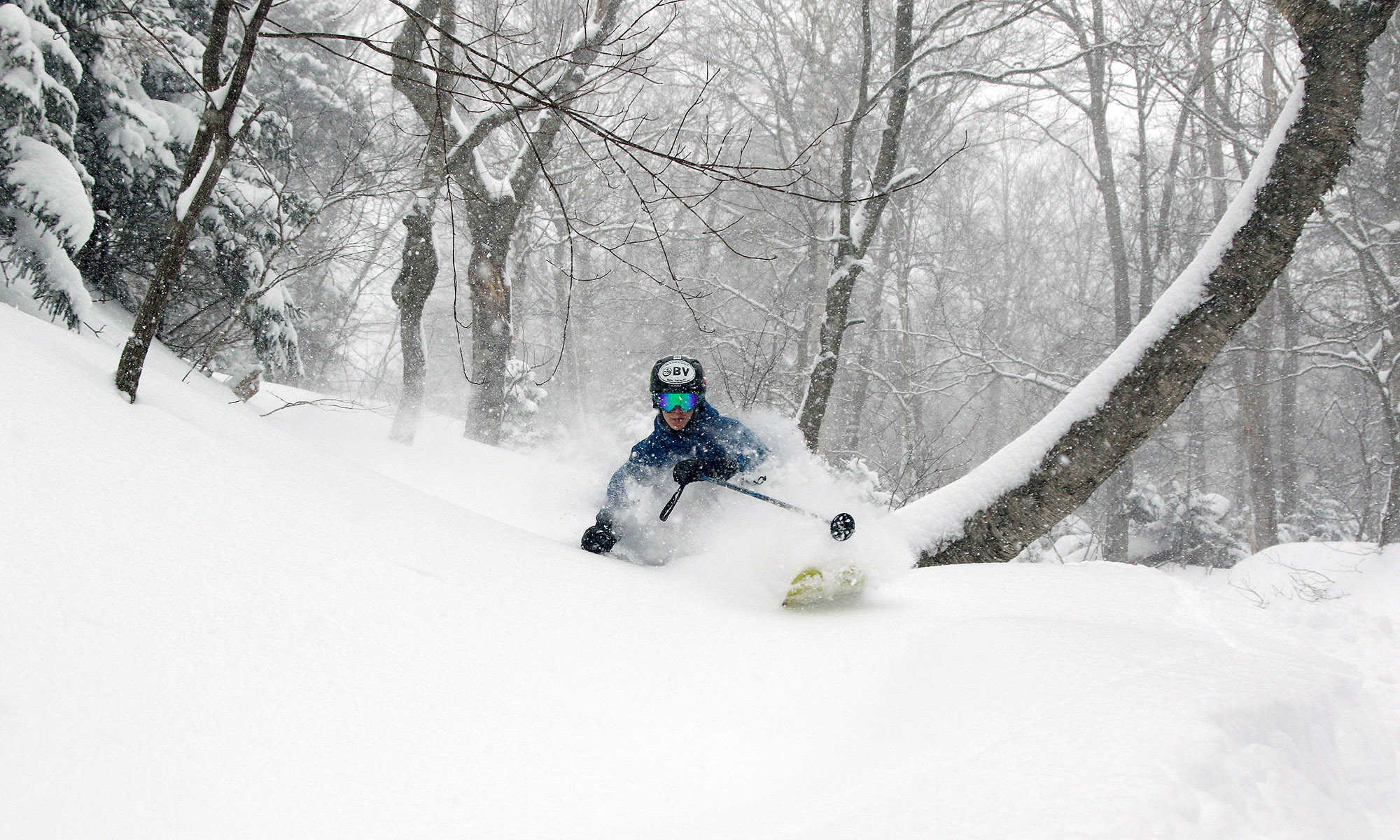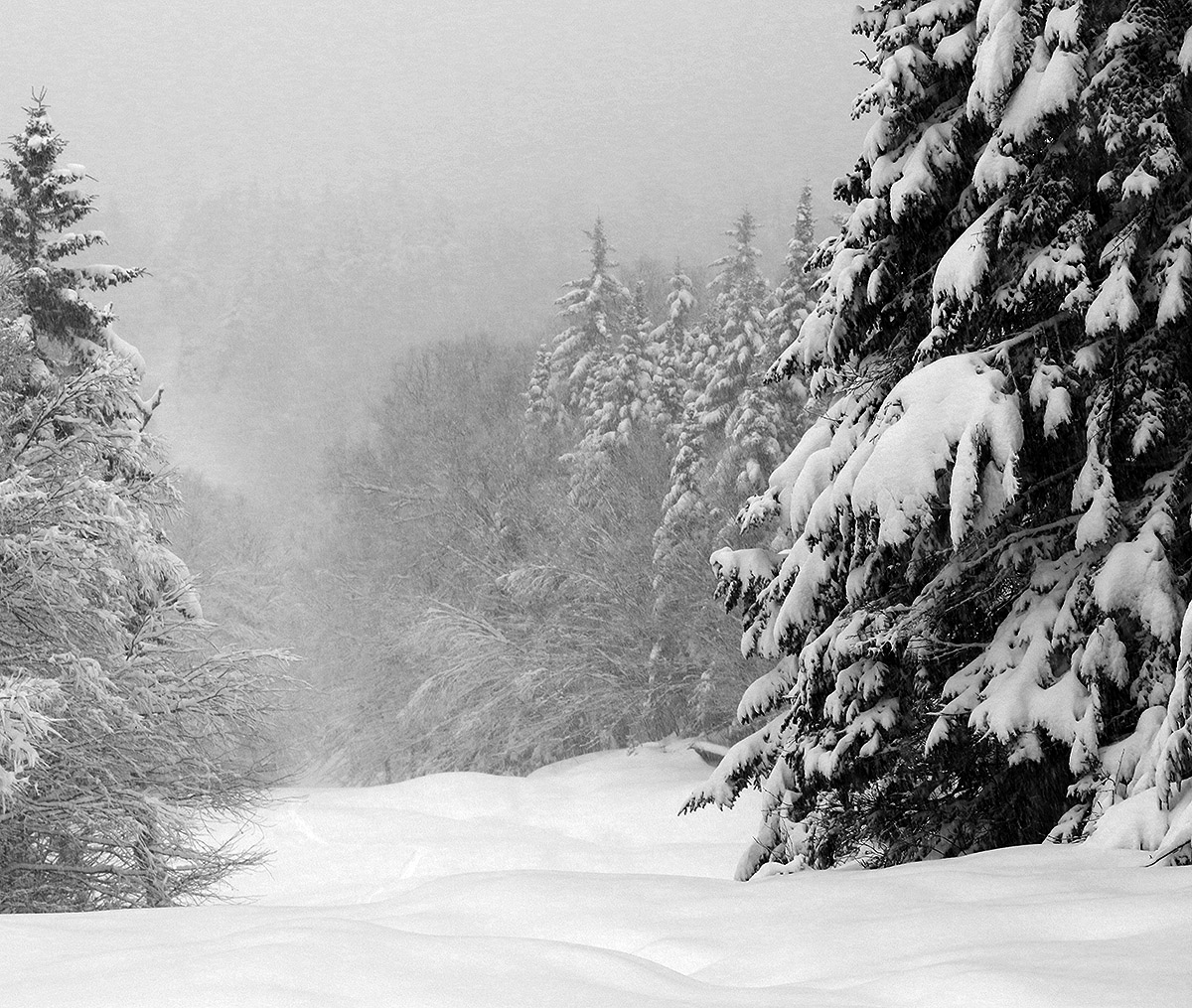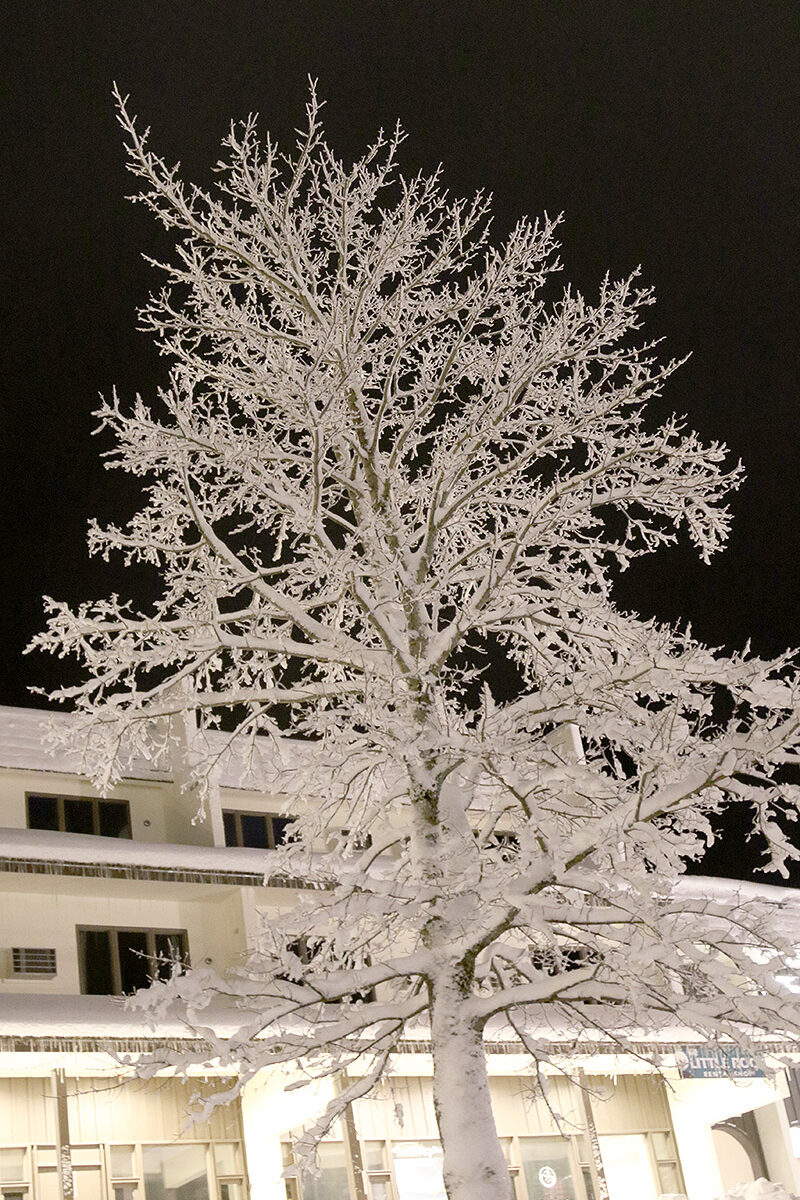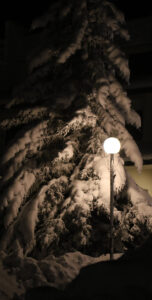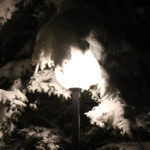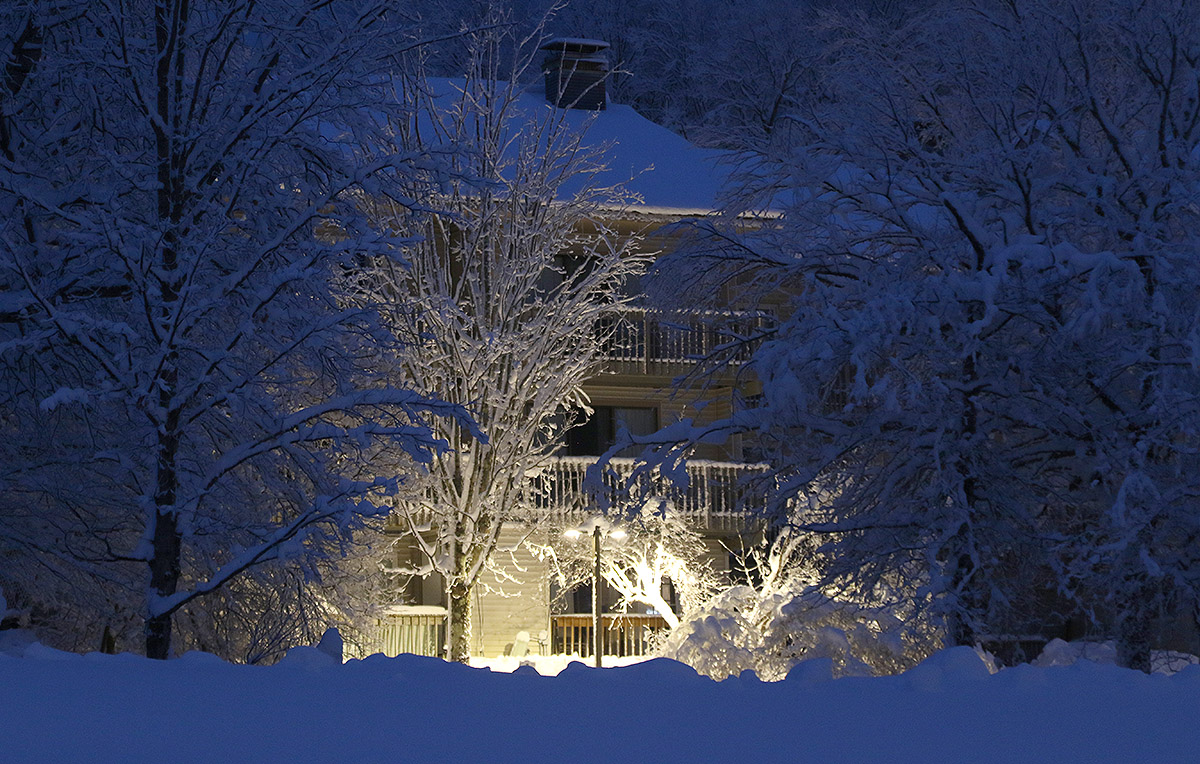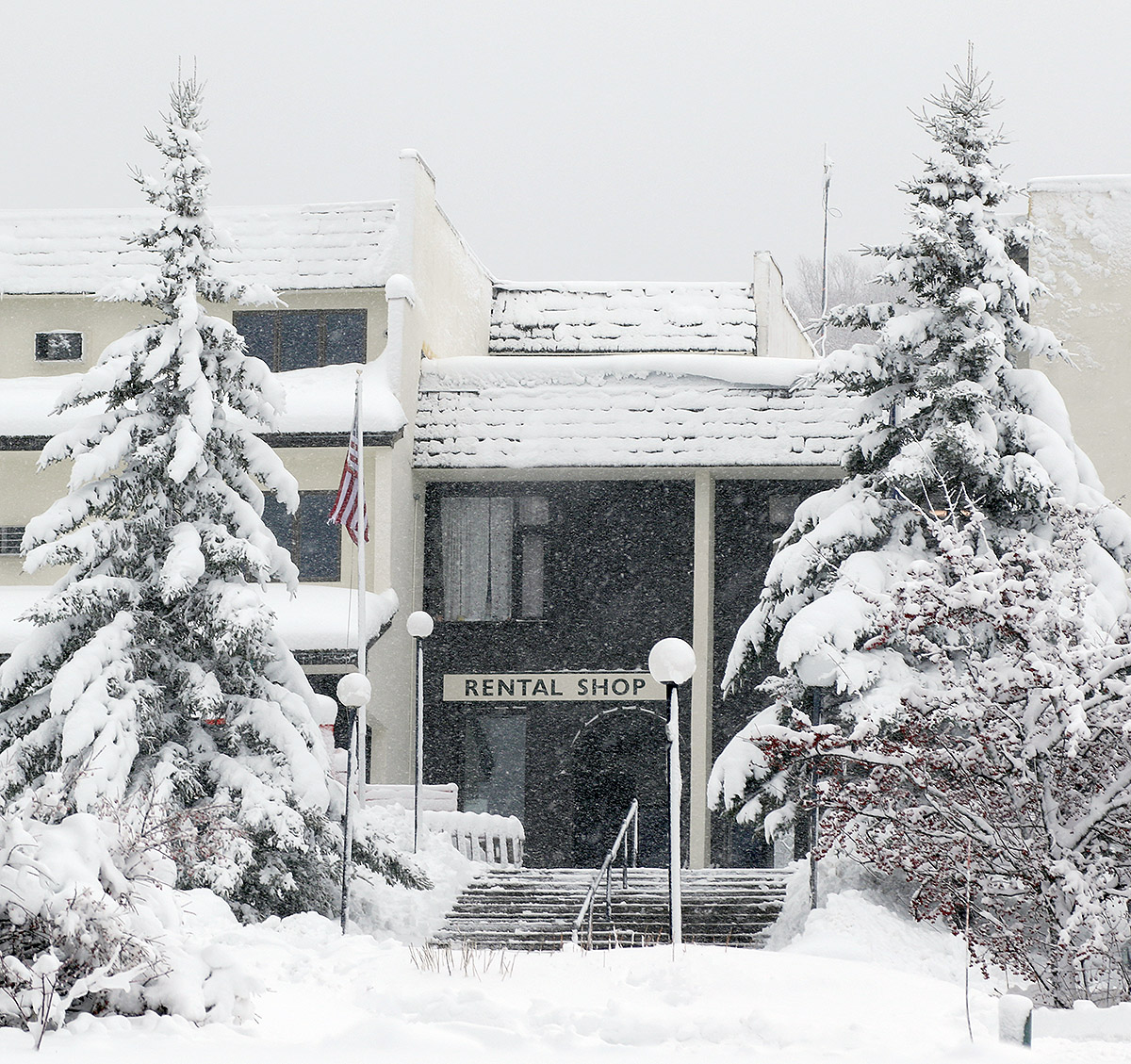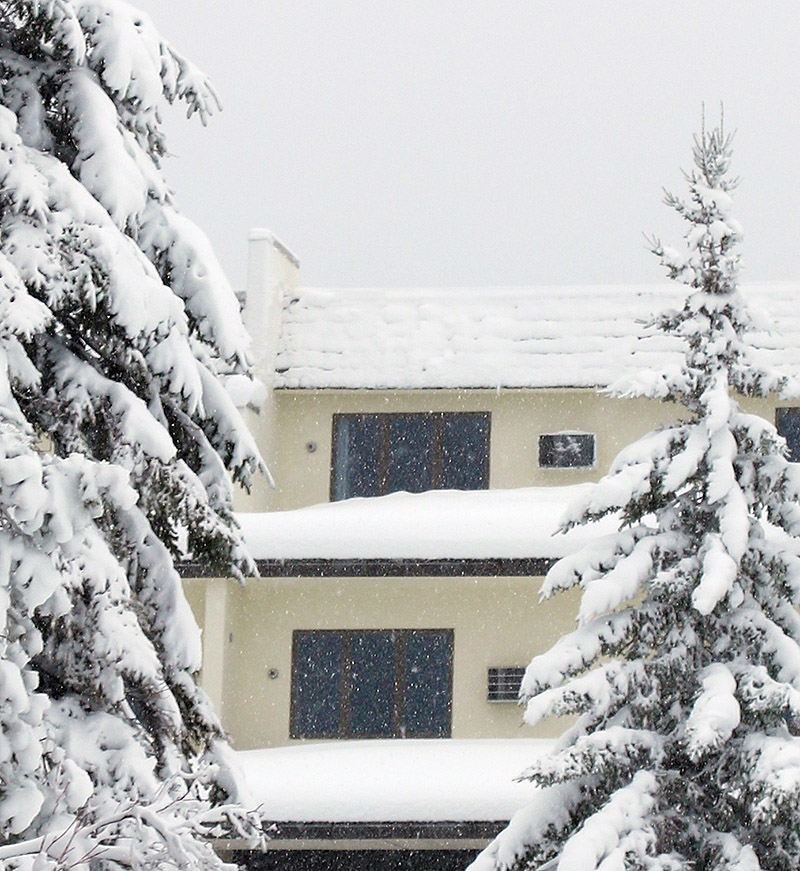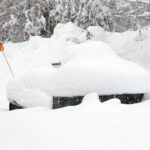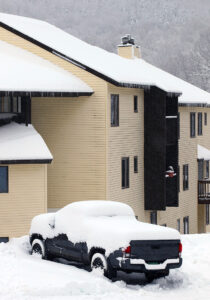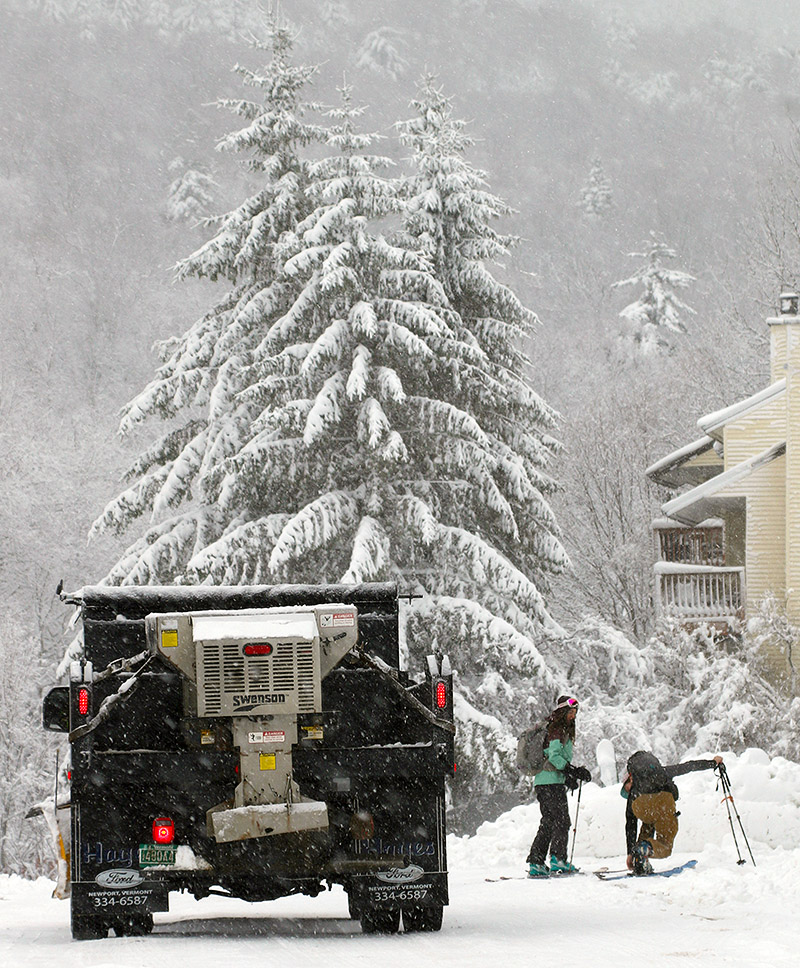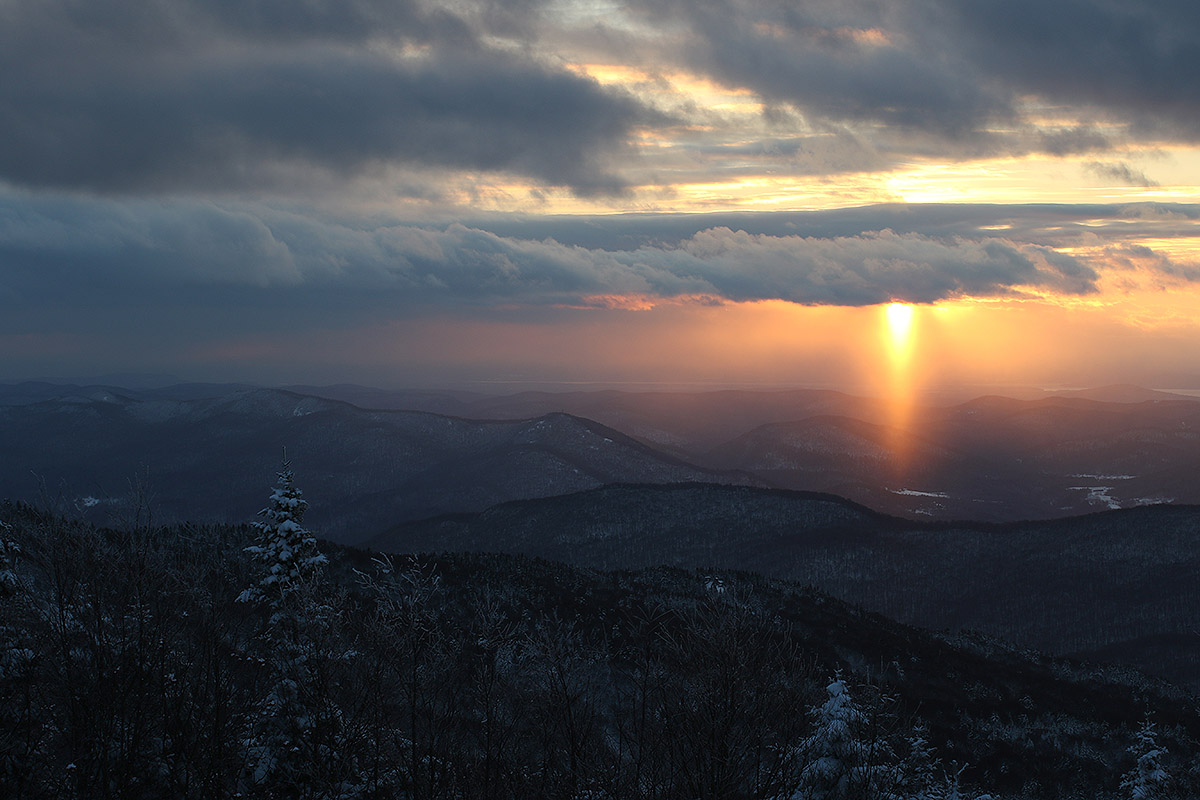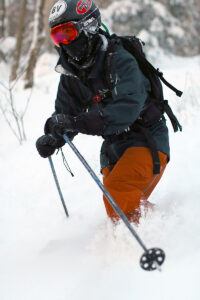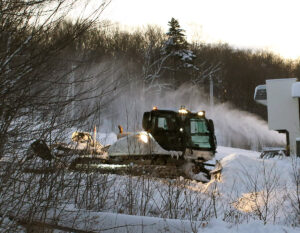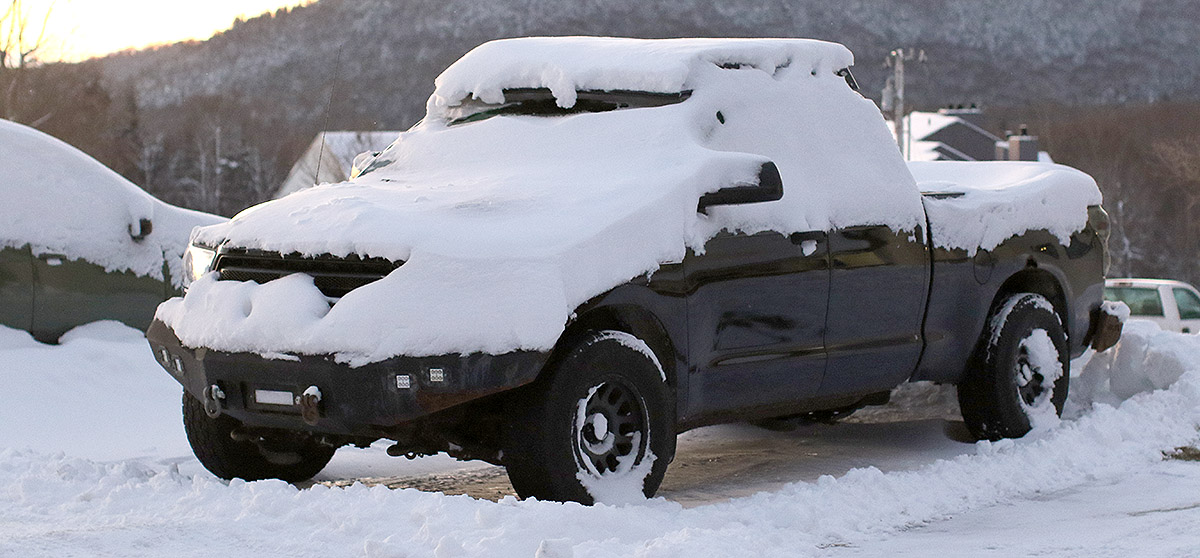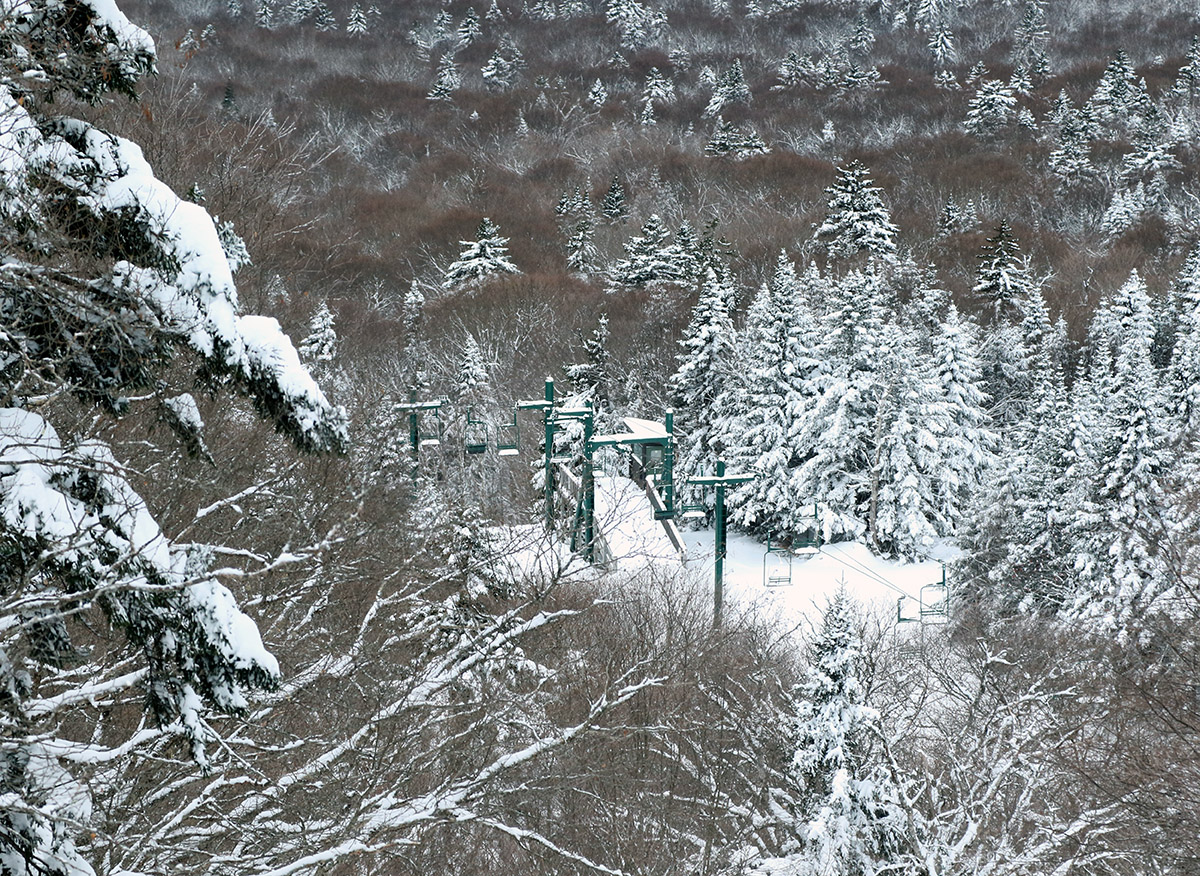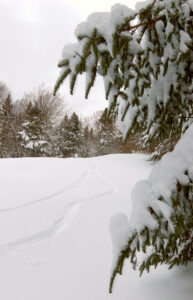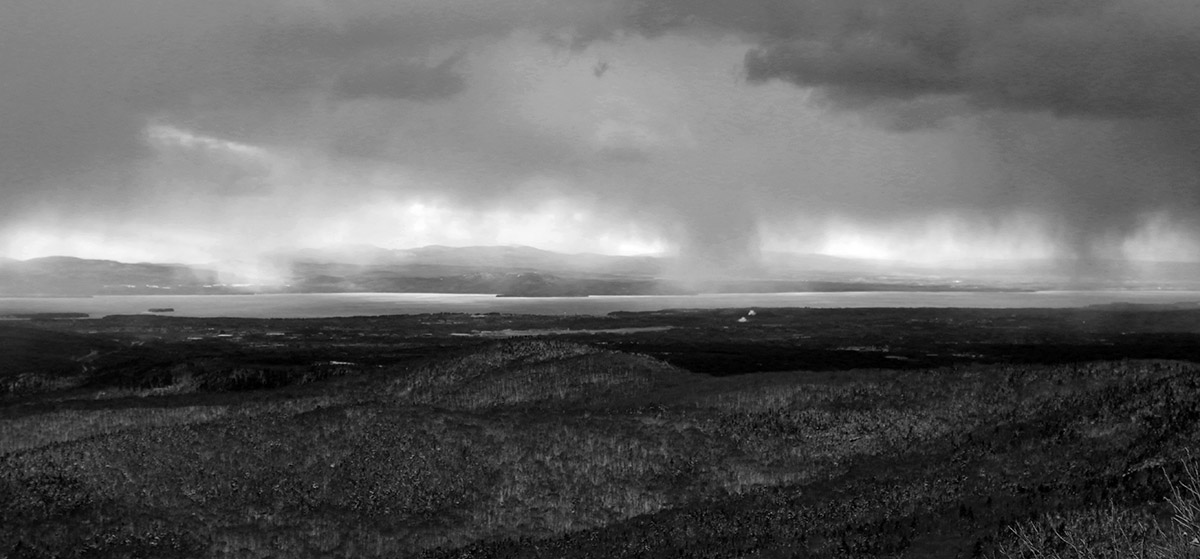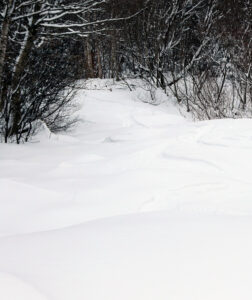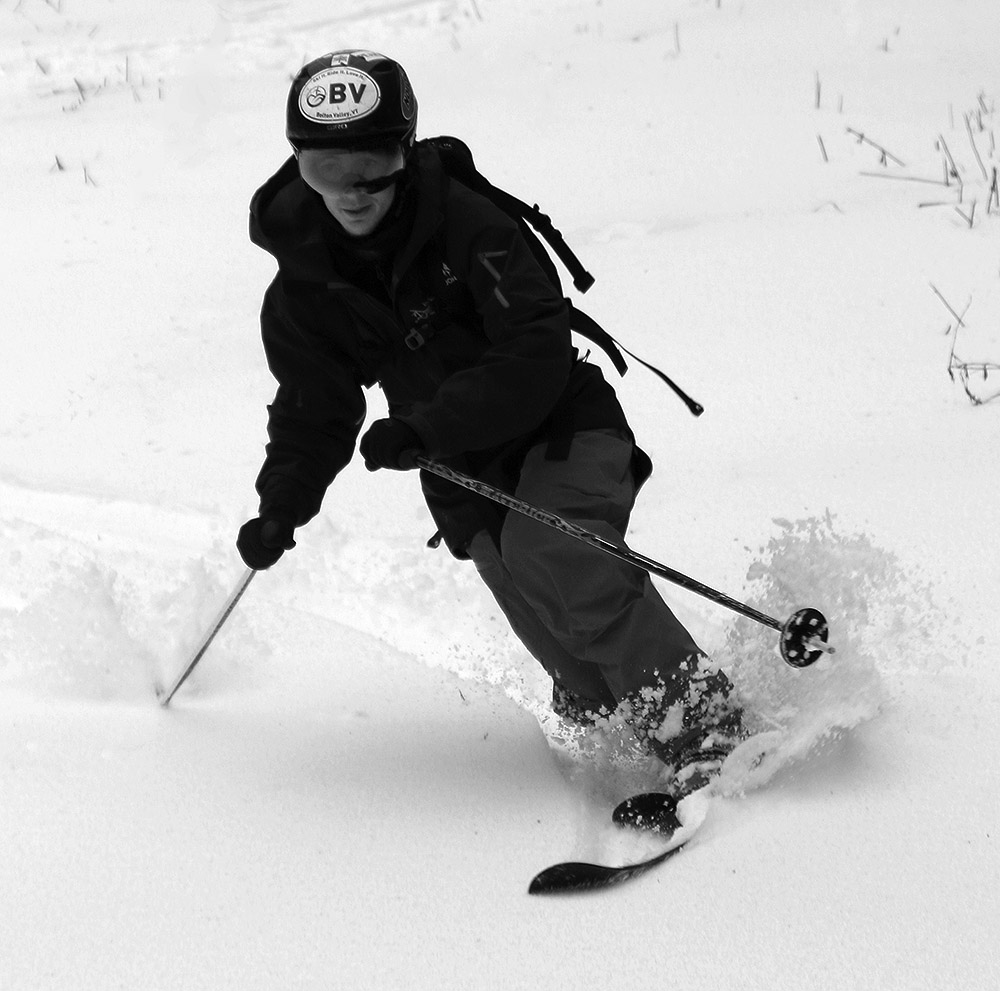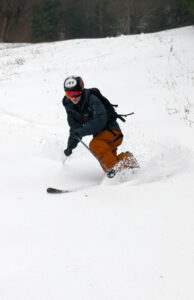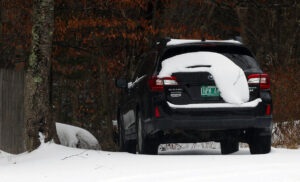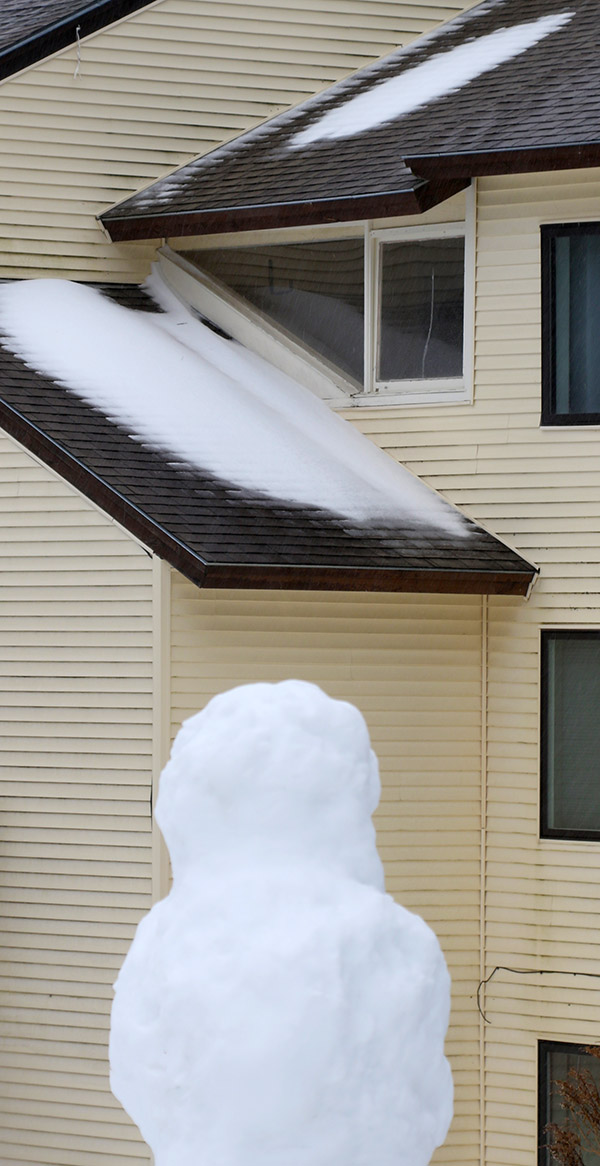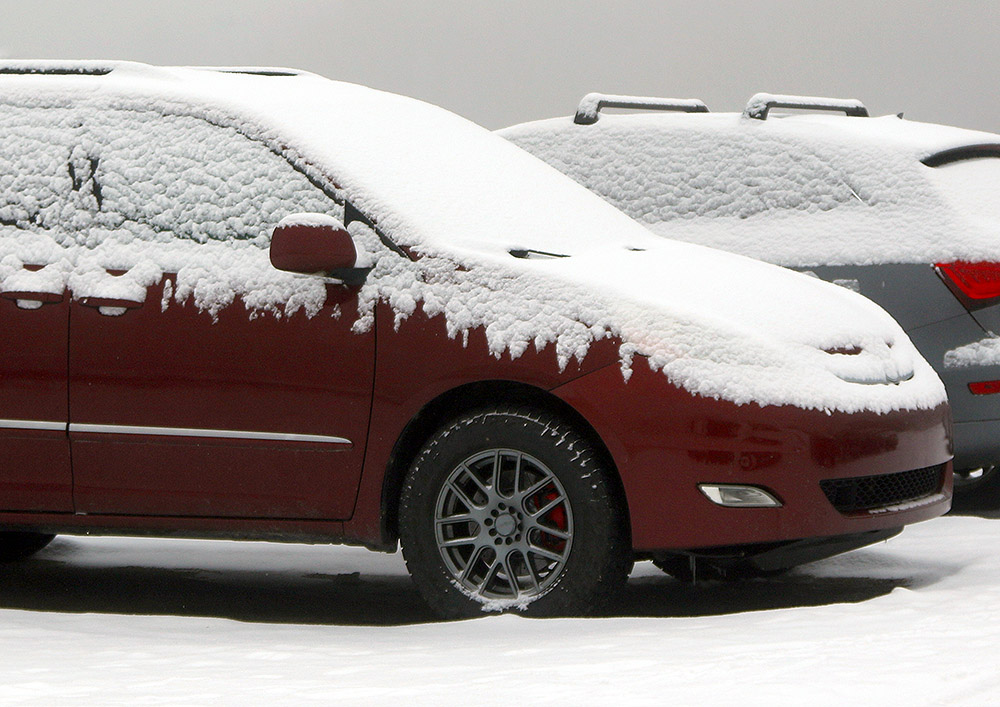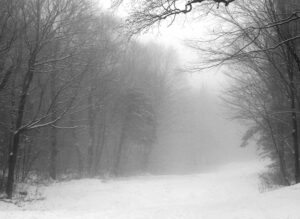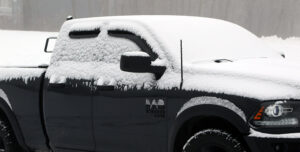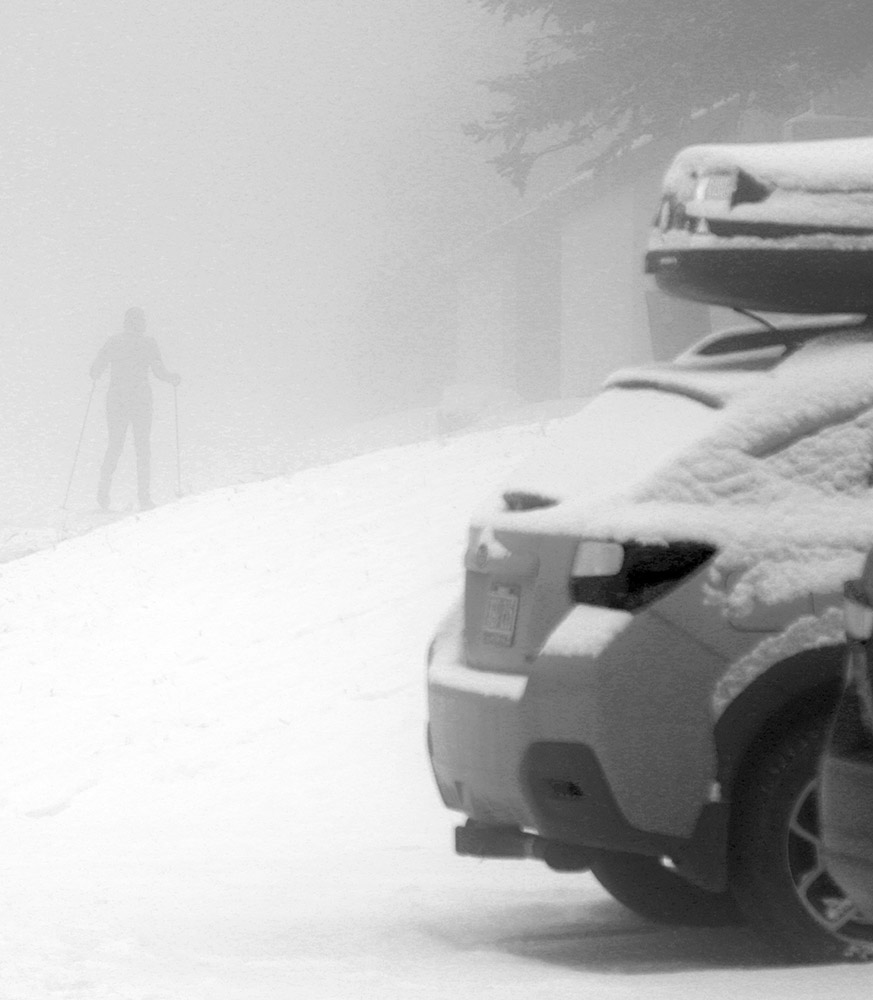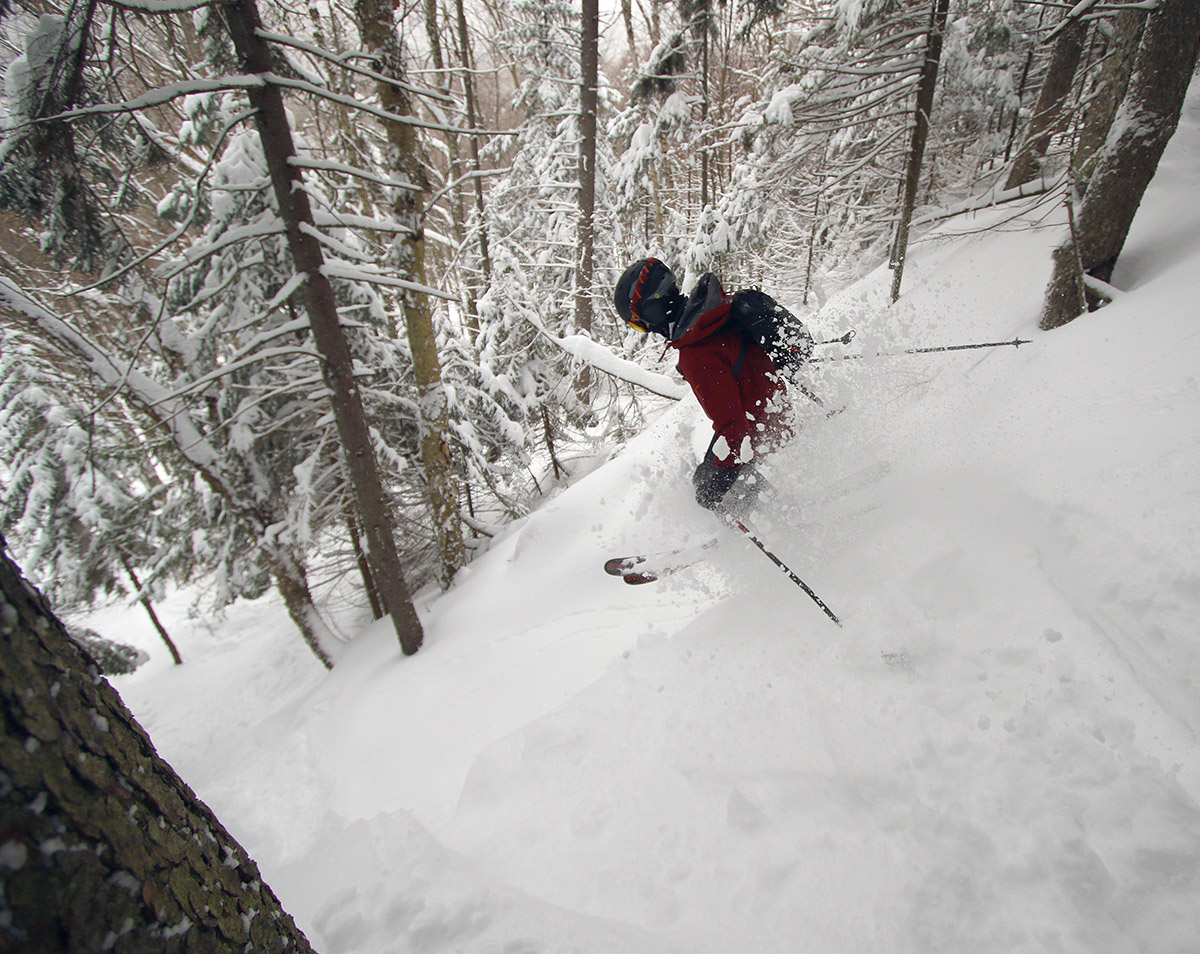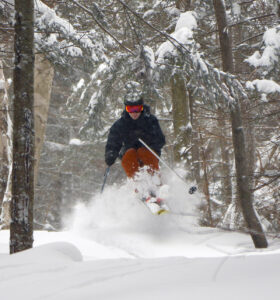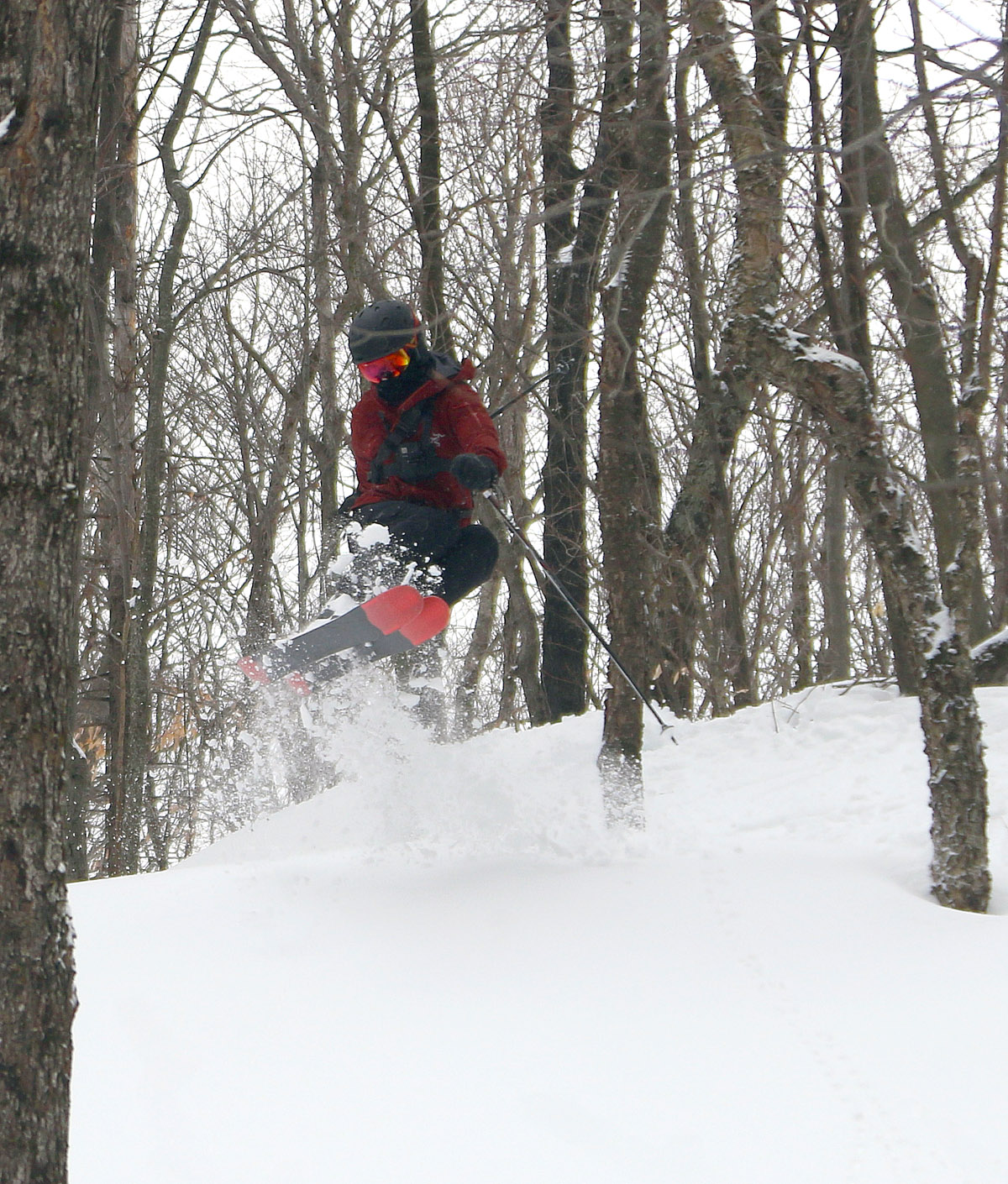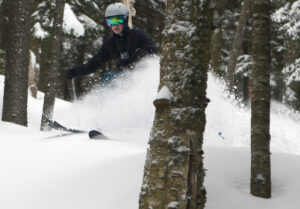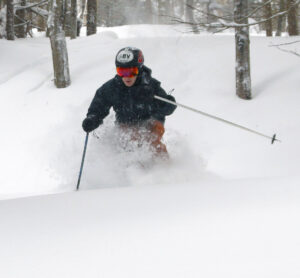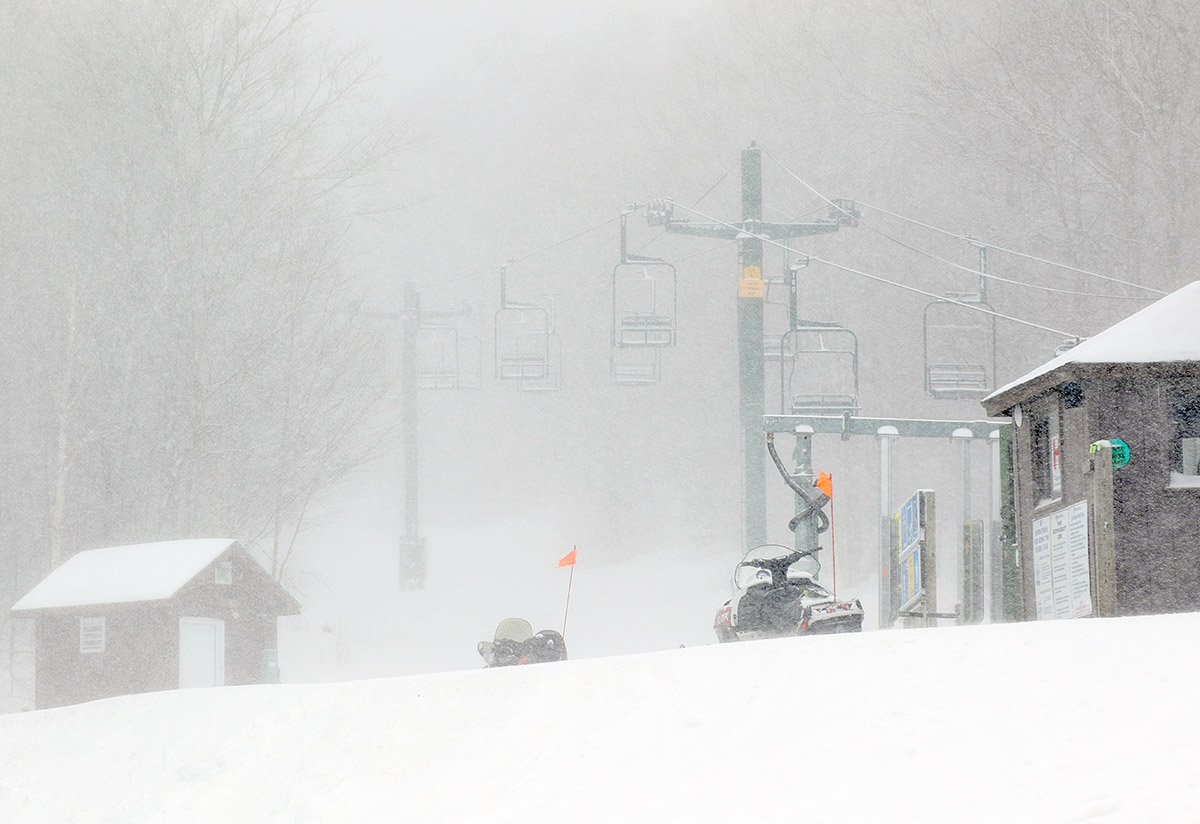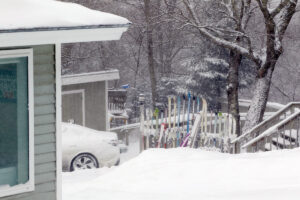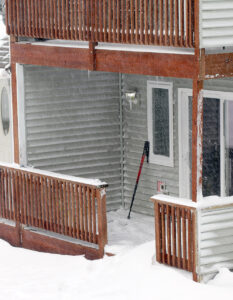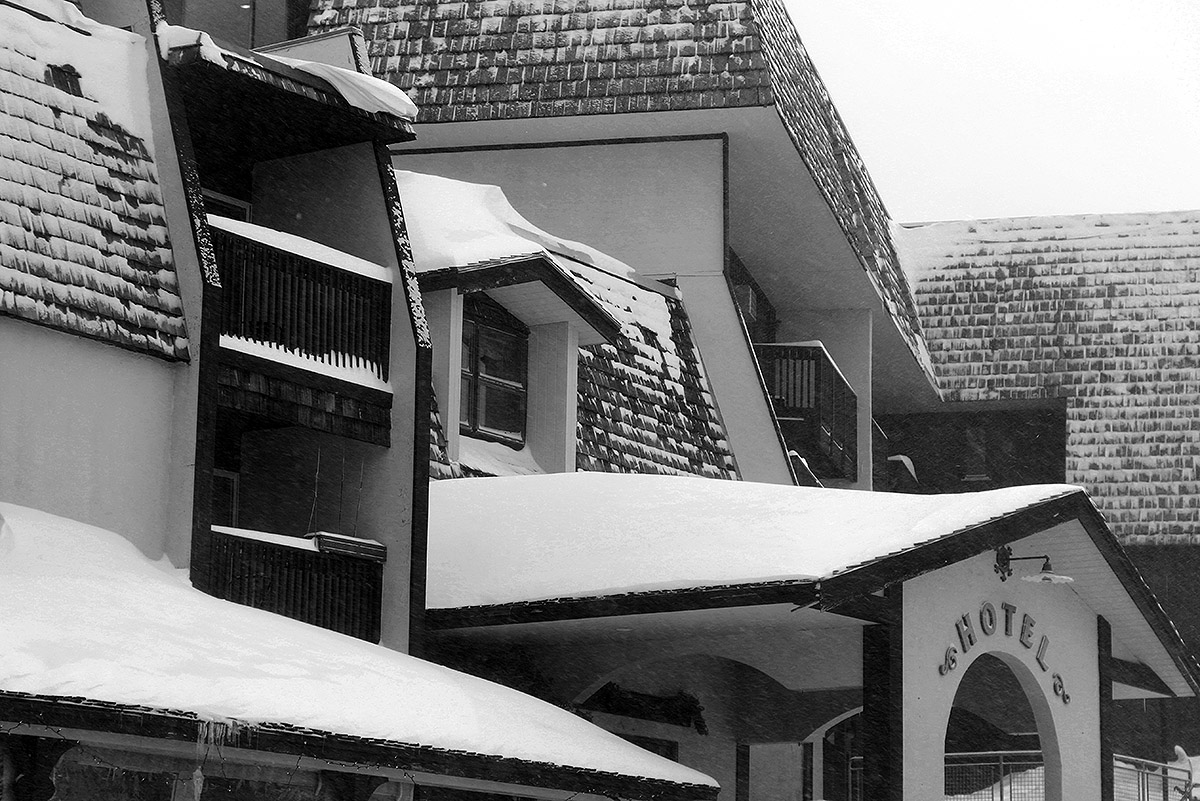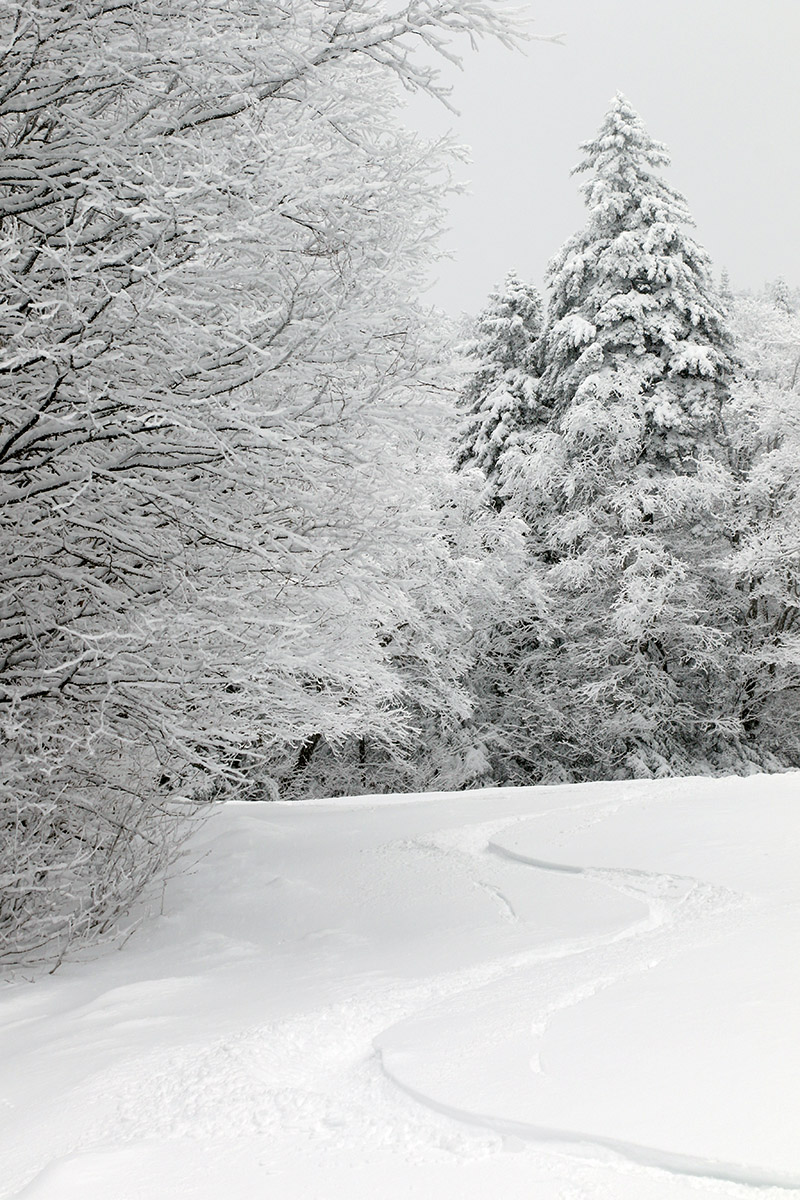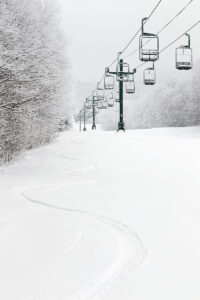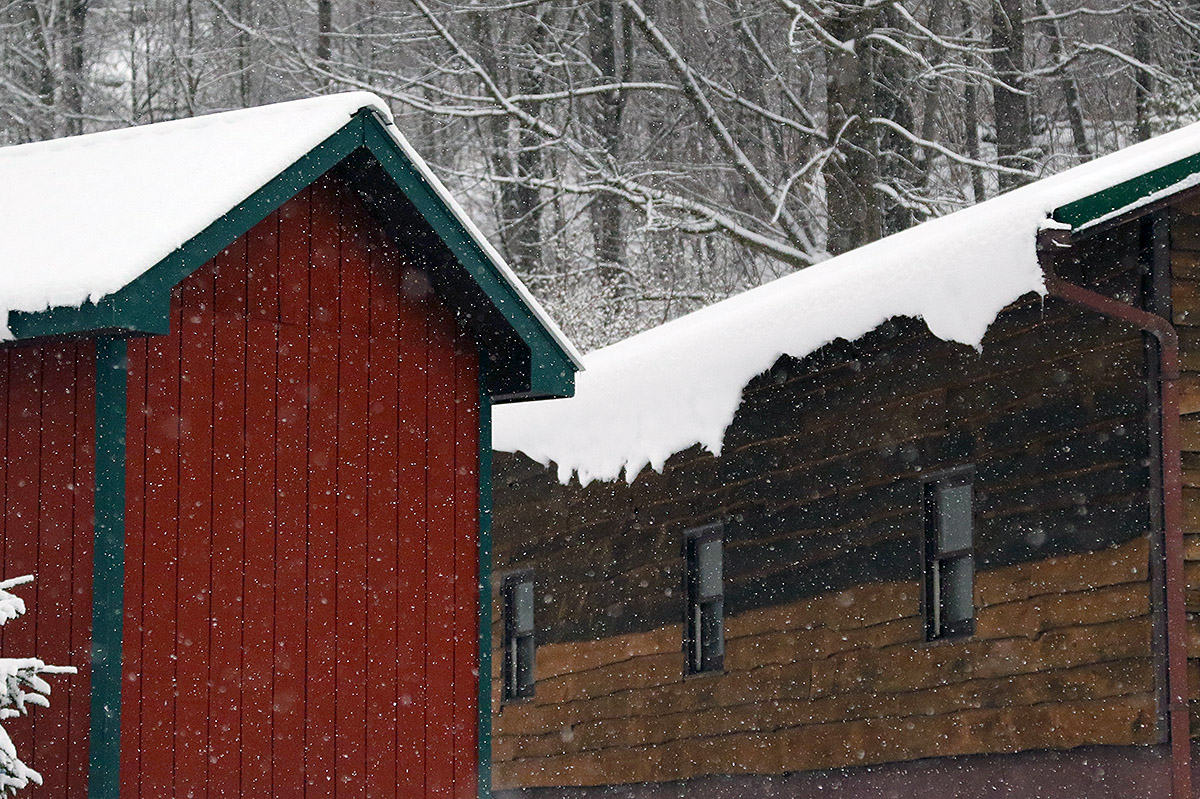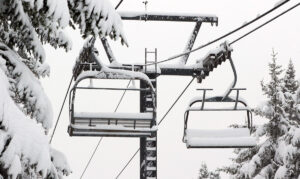
As of their 4:00 P.M. update, Bolton was reporting a foot of new snow so far from this current winter storm, and I’m sure they’ve cruised right past that mark with the way it was snowing up there when I left the mountain this afternoon.
The early morning report from Bolton was 6 inches new up top, so my wife and I planned to let a few more inches accumulate and then head up in the afternoon for some lift-served runs. That plan quickly changed around 11:30 A.M. when we noticed that their main base area live webcam was frozen. We checked their website and they’d updated the snow report to indicate that they’d lost power. They were working directly with Green Mountain Power and hoped to get it back up in an hour, but that was very much up in the air.
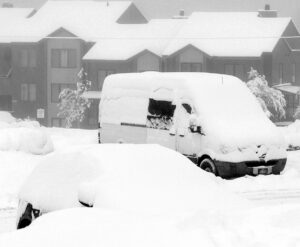
About an hour later with no change in operating status at the resort, I figured it was time to head up for some ski touring to get out in the new snow, since the potential for lift-served skiing was just too uncertain. When I first arrived up at the mountain, the snowfall was steady but I’d say only moderate in intensity. I did some quick depth checks around the Village to get a sense for how much new snow was there, but it was tough to gauge. In many areas, the new snow was so well blended with the old snow that it was hard to determine where the interface was. Overall, that’s a great sign because it indicates that the snowpack wasn’t hit too hard by the warmer temperatures on the front end of this system. In some spots I could find a thicker layer below the new snow, but even at that point I was often getting surface snow depths of 12 to 14 inches. Whatever the accumulations, there’s plenty of new snow and it’s coming together nicely with the underlying snowpack.
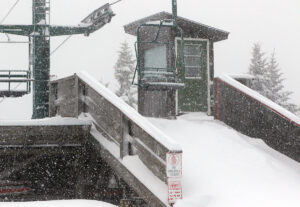
I skinned up to the Wilderness Summit, and touring traffic at that point seemed very light – there were just a couple of tracks down Peggy Dow’s. As I ascended, the intensity of the snowfall increased, and when I was up above 3,000’ on Wilderness it was definitely in the 1-2”/hr. range at times. I know it’s really dumping by how quickly my gear takes on snow accumulations during touring transitions, and this was one of those times where I was constantly having to brush off the snow.
Fat skis were the call again today, and this snow is on the denser side, so you want some pitch for the best turns. In terms of density, at 2,000’ the snow seemed to be a bit above the 10% H2O range, and up at 3,000’ it’s definitely drier; it’s got the feel of something in the 7 to 8% H2O range. The turns are great anywhere at elevation of course; it’s simply bottomless powder everywhere with this storm putting down plenty of liquid equivalent. I was worried about some of the water bars getting blown out with the warmer front end of this storm, but in general they seemed similar to how they were before. The snowfall didn’t actually slow down when I descended back to the Village, so it wasn’t just 3,000’+ that was getting hammered at that point – the intensity of the snowfall had definitely increased in association with the back side of the storm.
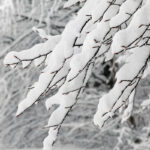 The mountain had been running at least the Snowflake Chair when I started out on my tour, so my plan was to swap over to mid-fats and get in a few lift-served laps to finish off the session. Well, when I arrived back at the main base, power was out again everywhere, so that plan was out the window. There was an easy solution to that though; I just slapped the skins back on and kept touring. I was initially thinking a nice little tour up to the Snowflake Summit would be a great way to finish off the session, but when I got to Five Corners I suddenly thought about hitting the Timberline Summit. I haven’t been up to Timberline at all yet this season because the snow depths at the Timberline Base are still a bit lean compared to the stronger snowpack above 2,000’, but that part of the tour gave me a chance to check out Timberline’s higher elevations. There’s been hardly any skier traffic over there, so it’s nearly untracked everywhere.
The mountain had been running at least the Snowflake Chair when I started out on my tour, so my plan was to swap over to mid-fats and get in a few lift-served laps to finish off the session. Well, when I arrived back at the main base, power was out again everywhere, so that plan was out the window. There was an easy solution to that though; I just slapped the skins back on and kept touring. I was initially thinking a nice little tour up to the Snowflake Summit would be a great way to finish off the session, but when I got to Five Corners I suddenly thought about hitting the Timberline Summit. I haven’t been up to Timberline at all yet this season because the snow depths at the Timberline Base are still a bit lean compared to the stronger snowpack above 2,000’, but that part of the tour gave me a chance to check out Timberline’s higher elevations. There’s been hardly any skier traffic over there, so it’s nearly untracked everywhere.
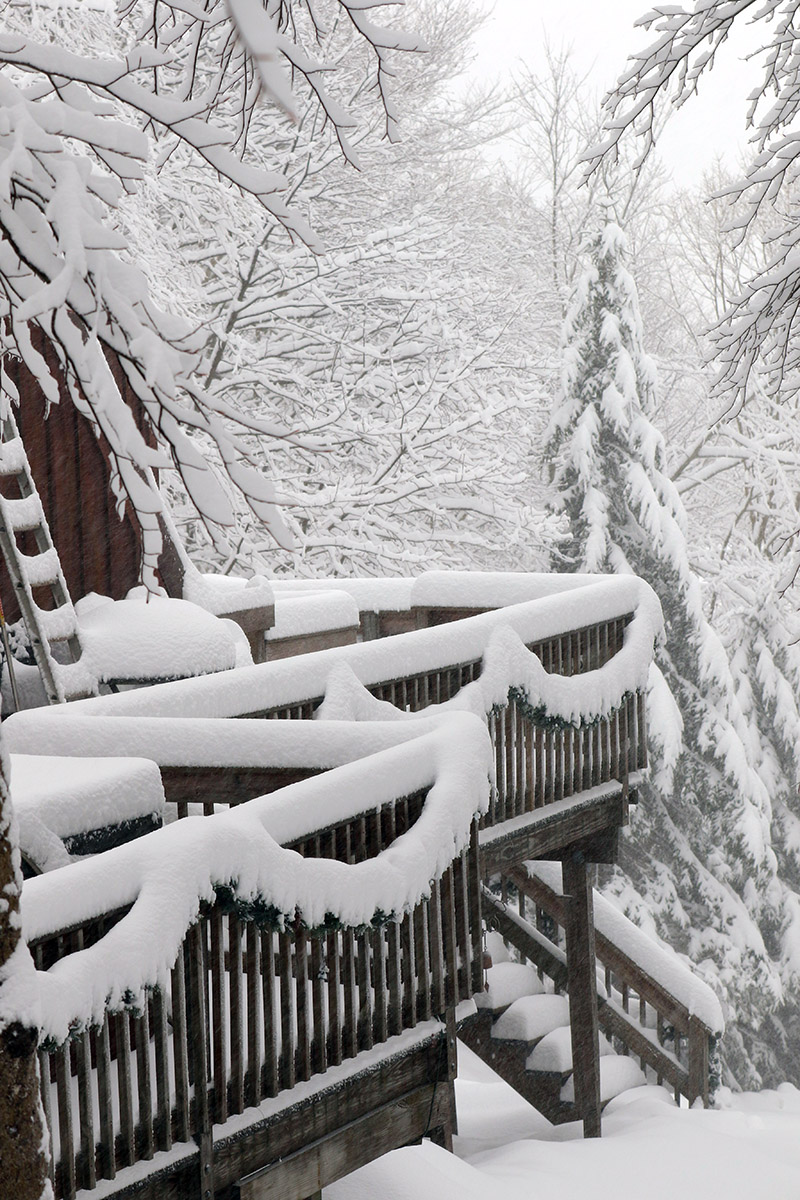
Heavy snowfall continued to pummel the area right through to the end of my ski tour, and my car had been loaded with snow in just the couple hours that I was out there. It took me probably 10 minutes to clean off the snow. The temperatures had definitely dropped as I was heading down the access road, and the heavy snowfall didn’t start to abate at all until I was below 1,500’. We’ve been accumulating better even down in the valley now that the temperatures have dropped below freezing.
